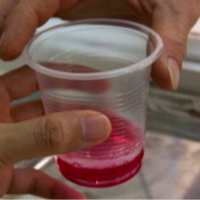Comment on How Do I Choose The Best Treatment Facility by How Do I Choose The Best Treatment Facility | Victoria Detox
[…] post How Do I Choose The Best Treatment Facility appeared first on Canada Drug […]
What is a “dry drunk”?
If you’ve at all researched anything addiction-related, you’ve probably seen the term “dry drunk” floating around in blogs, articles, forums, self-help books, and other literature. For those of you who don’t know the term, it is one frequently used in the addiction treatment and recovery field and refers to a person who is physically free of substances or alcohol (e.g. abstinent), but still exhibits behaviours connected with addiction and ways that support it. A sober person upholding old thoughts, beliefs, defenses, behaviours, and attitudes associated with addiction is a common example of someone who may have “dry drunk” traits. Depending on the modality, professionals have different ideas on the cause of “dry drunk”. Most commonly, it’s believed that such persons lack spirituality or belief in a higher power/faith. Alcoholics Anonymous (AA) is most popularly known for a similar description. The reasons a person still maintains addictive behaviours and attitudes while being void of actual substances will vary. Addiction and substance use is a very individual, unique condition. Thus, what motivates them will differ among everyone. Other therapies, see the “dry drunk” identity as someone who may be abstinent from drugs and alcohol, but continues to lack personal meaning and purpose or has unaddressed psychological and mental issues. As a result, these individuals may continue to display qualities such as a lack of interest, frustration from boredom, social issues, and continuing mental and emotional frustration. Depending on the program, therapy will try we focus the cause of addiction to prevent this “dry drunk” condition. AA, for example, focuses on a reconnection with spirituality, psychological program address mental health issues and personal struggles, and meaning therapy adheres to principles of meaningful living to help clients develop a sense of personal meaning that will help him or her excel and flourish in life. The post What is a “dry drunk”? appeared first on Canada Drug...
Your Checklist When Looking for Addiction Treatment
Getting treatment for yourself or a loved one can be overwhelming. There are many options in Canada offering similar, but also very different, addiction services. The treatment you choose depends on a number of very important, personal factors. Here is some information useful for when you’re looking for residential treatment the first time or even the 2nd, 3rd, or 4th time. These five factors are important to keep in mind when researching treatment options. These elements together will allow you to determine the most suitable treatment options: Age Location Sex and Gender Budget availability Substance(s) being abused Age, Sex, & Location Most adult treatment facilities require clients be at least 18 years old. Youth under 18 are able to attend youth-specific treatment options. Some facilities are co-ed, but many are also gender-specific. Your home province may have some gender-specific treatment and recovery options, but potentially not many. Ontario, British Columbia, and Alberta are home to the majority of Canadian treatment providers. Be open to travelling to another province for addiction treatment as you may find a facility that better suits your needs. Budget Your budget will be a crucial consideration for treatment. Private treatment is more expensive than charitable and public treatment, but sometimes easier to attend right away. All treatment facilities price their programs slightly differently, but most 30-day programs cost around $15,000. Charitable (non-profit) treatment options cost approximately $5000 for 30-day programs. These types of programs include recovery homes, church groups, and transitional living organizations. Government treatment in Canada is covered by our public health care and administered by provincial governments. For some government facilities, there is a small fee per day (around $40). Government treatment may sound more ideal because of its price tag, but wait lists and bed availability may cause you to change your mind. The substances or behaviours you wish to recover from will be important considerations in your budget, too. First, you need to make sure the treatment facility can attend to you. This is especially if you or your loved one requires treatment for two or more substances or is on methadone maintenance. Only a few programs have the resources for treating multiple addictions and supervising methadone tapering and they generally have higher fees. When arranging detox, make sure you access the appropriate type of detox. There are two types: Medical and Social. The type of detox you require will influence your budget as well. Know Your Needs… And Your Wants Another important consideration when selecting treatment are the services provided within the programs. Many individuals with addictions have additional health issues – physical, mental, psychological, past trauma – that need special care. Ensure the facilities you’re considering have the resources and services to support such issues. Left untreated, these problems can impede treatment completion and recovery. Other services like fitness, sports, pool, yoga, meditation, and working privileges are important to consider, too. Not all treatment providers offer extra services outside group and individual therapy. Some won’t even permit communication between clients and their families while in treatment. Important Note:It is common for facilities to embellish their program services to justify higher fees. If one treatment center’s prices go up, other facilities often increase their prices, too, in the belief that they offer the same services and programs. For example, many facilities say they treat mental illness, but only some have the necessary psychiatrists or Masters’ level counsellors. Even if a treatment center does claim to have a psychiatrist, it doesn’t mean clients will be assessed. Often times, individuals are only assessed when they seem unstable. This is the result of poorly educated administrators and uninformed...
Treatment Centers Supporting Methadone Maintenance
Alberta Private Facilities Aventa Addiction Treatment for Women, Calgary. 403.245.9050Simon House Recovery Center, Calgary. 403.247.2050 Government Facilities Bryce House & Logan House, Ponoka. 403.328.0955Henwood Treatment Center, Edmonton. 780.422.9069Lander Treatment Center, Claresholm. 403.625.5200Northern Addictions Center, Grand Prairie. 780.538.5210Southern Alcare Manor, Lethbridge. 403.328.0955 Charitable Facilities Recovery Acres Society, Edmonton. 780.471.2969 or 2996 Alpha House, Edmonton. 780.475.5957 British Columbia Private Facilities Cedars at Cobble Hill, Cobble Hill, Vancouver Island. 1.800.716.2006Edgewood Addiction Treatment, Nanaimo. 250.751.0111LDR Holistic Addiction Wellness Centre, Langley & White Rock. 1.877.529.3293Orchard Recovery Center, Bowen Island. 1.866.233.2299Pacifica Treatment Center, Vancouver. 1.866.446.0668Round Lake Treatment Center, Round Lake (North of Vernon). 250.546.8848Sage Health Center, Kelowna. 250.374.2399 Government Facilities Burnaby Center for Mental Health & Addiction, Burnaby. 604.453.1900 or 604.675.3950Kinghaven Treatment Center, Abbotsford. 604.864.0039 or 1.877.864.0039Peardonville House, Abbotsford. 604.856.3966 Charitable Facilities Raven’s Moon Resources, Abbotsford. 604.855.8322 Nova Scotia Charitable Facilities Crosbie House Society, New Minas. 902.681.0613 or 1.800.628.0613 Ontario Private Facilities Caverhill Manor, Stratford. 519.272.2424 or 1.877.272.2453Homewood Addiction Services, Guelph. 519.824.1010Newgate 180, Merrickville. 613.269.2672 or 1.888.524.8333New Awakenings Wellness Center, Port Perry. 416.477.5553 or 1.855.693.6090 Government Facilities St. Denis Center, Cornwall. 613.933.0412Camillus Center (The Oaks Drug and Rehabilitation Centre), Elliot Lake. 705.848.2652Stonehenge Therapeutic Community, Guelph. 519.837.1470 ext: 226 for women and 227 for menWomenkind Addiction Services, Hamilton. 905.521.9591Maison Renaissance, Hearst. 705.362.4289 or 1.800.766.0657Mission Services of London: Quintin Warner House, London. 519.434.8041North Bay General: Nipissing Detox and Substance Abuse Program, North Bay. 705.476.6240 ext: 221Niagara Health System: Newport Center, Port Colborne.House of Sophrosyne, Windsor. 519.252.2711 or (Toll-Free) 1.877.533.9503 Saskatchewan Private Leipzig Serenity Retreat, Wilkie. 306.658.4767 Note:These listings are frequently updated. If you know of a facility supporting methadone maintenance not listed here or a listed facility that no longer offers methadone treatment, please contact the phone number below. For more information on these treatment facilities, on methadone maintenance, or other addiction-related inquiries, contact us. The post Treatment Centers Supporting Methadone Maintenance appeared first on Canada Drug...
Methadone vs. Methadose
Abstinence-based programming is, by far, the most common approach for treating substance use disorders and addictions. While it is the most optimal outcome health-wise, chronic substance and alcohol use can have such sever effect on the brain that immediate abstinence is too difficult no matter the desire to stop. Drugs like opiates (e.g. heroin, morphine, fentanyl) have an intense influence on the release of dopamine in the brain. This alters the pleasure-reward systems so much that it begins to control the individual’s behaviours to ensure it is constantly activated (i.e. stimulated) and avoiding low levels of dopamine (withdrawals). For many people with this sort of experience, abstinence likely seems impossible. But living a normal life isn’t impossible. Opiate substitutes like Methadone and Suboxone allow individuals with opiate addictions to pursue a stable existence and life. Unlike other opiates, Methadone takes longer to metabolize in the body. This means users don’t experience withdrawal symptoms as fast. With longer periods between withdrawals and knowing that you’re receiving a constant dose, individuals can redirect their time towards more personally meaningful and beneficial activities rather than finding ways (sometimes criminal) to finance their drug use. The Methadone Maintenance Treatment (MMT) program has operated in BC since the 1990’s. Earlier this year, Methadone had some drastic changes. Previously, patients would attend a pharmacy daily to receive methadone – a powder solution mixed with a sweet drink (often Tang) by a pharmacist. The new medication (being offered in BC since February 2014) has be renamed Methadose – a cherry-flavoured premixed solution. Chemically, it is the same as its predecessor, but now is 10 times stronger than 1 mg/ml of Methadone. Methadose was developed to reduce the likelihood of abuse such as injecting it versus ingesting it orally. Methadose congeals underneath the skin or in the veins and can cause abscesses and discoloured, swollen arms. This change is similar to the transition from Oxycontin to OxyNEO. This new dosing system is also intended to prevent/reduce black market sales. According to a long-term user in Vancouver, pharmacists would dilute (add less methadone) in the old solutions they’d give to patients, then sell the rest. He, himself, admitted to buying methadone illegally from the back door of a pharmacy. One of the biggest concerns with this changeover to Methadose is the increased risk of overdose. For people who abuse methadone and don’t know about BC’s transition to a more potent solution may ingest a drug that is way stronger than they are aware of. People who have been regularly receiving diluted Methadone may also have an increased risk of overdose when they begin taking Methadose. Another major complaint that has arisen since Methadose’s arrival is it’s short life time. Long-time MMT participants have reported they felt withdrawal symptoms much faster than when they were on the original solution. Unable to get more Methadose in their prescription or return back to the original solution, many have reported to using heroin and other illegally purchased substances as a supplement between their Methadose times. This is the exact opposite of what the MMT’s original intention was when implemented (we hope anyways). Currently, BC’s Minister of Health said the province was looking into the effectiveness of Methadose after hearing the many concerns of long-term stable participants. Have you experienced a similar situation with the new Methadone? What have you done to address its shorter effects? We want to know. Alternatively, if this change has made you consider tapering off Methadone completely, contact us to discuss your options in BC, Alberta, Ontario, and the rest of Canada for Methadone detox and treatment. Resources Methadose and the Policy for Methadone Maintenance Treatment Methadose Drug Factsheet Changes...
Gender-Specific Treatment
Early Research Included Mostly Male Participants When research and studies on addiction began taking place, much of the research focused on male addiction. Men tended to have more substance dependency issues than women; a 5:1 ratio. That ratio then dropped down to 2.5:1. Addiction research on men, in the past, was often used to generalize female substance dependency problems. As a result, advocacy for female-specific treatment became prevalent in the 1990s and thereafter. Women & Men Experience Addiction Differently Women and men tend to experience addiction and recovery differently. Outside of biological sex, socioeconomic factors associated with male and female genders greatly influence addiction treatment. Both men and women face stigma for their addictions; women are particularly susceptible. Developing Addiction Research has shown drug and alcohol dependency is similar among both men and women: changes in brain chemicals and processes. In one study, both men and women with addictions showed reduced serotonin activity. Reduced Serotonin affects judgment, self-control, and emotional regulation. The development of men and women’s addiction is different. Women’s addictions are often associated with violence, sexual abuse, risky sexual behaviour, and unwanted pregnancies. Women tend to cite health and family problems as the reason for entering treatment, while men cite employment and legal concerns. Accessing Treatment Differences become even more apparent when men and women try to access treatment. Women commonly experience issues related to the caregiver role. They often delay treatment because of previous treatment failures, feelings of guilt and shame, fear of losing custody, feelings of helplessness, and the belief that change isn’t possible. Males often delay or avoid treatment based on masculine stigmas asserting men aren’t permitted to be weak or in need of help. In Treatment Because early research focused primarily on males, only minor changes were made to addiction treatment to include females. Because men tend to seek substance abuse treatment more than women, male cultural norms often dominated mixed gender programs. In group settings, male and female issues may conflict with one another. Women focus on issues such as unhealthy relationships, violence, sexual abuse, eating disorders, impaired sexual functioning and orientation, parenting, childcare and custody, physical health, appearance, and hygiene. Men usually discuss problems like father/son relationships, anger and aggression, emotional isolation, spiritual disconnection, and sexual issues. Why Mixed Gender Programs Then? You may be wondering why mixed gender addiction treatment programs continue to be provided if they continually lack effectiveness. Because early addictions research grouped men and women together, it became a longtime belief that they could be treated together. Some facilities do not have the resources to support separate male and female programs. With a desire to help both demographics, many facilities opt for mixed gendered programming. Catering to both men and women also provide facilities with a larger clientele pool than if they were to focus on just one sex. The Benefits of Gender-Specific Addiction Treatment Gender-specific addiction treatment has many benefits. For one, the separation allows individuals to address any issues specific to each gender. Males and females readily share more personal information in groups with peers of the same gender. Bonding behaviours are more noticeable, too. In mixed group settings, men and women may forego expressing issues in the presence of the opposite sex. Issues left unaddressed potentially magnify feelings of guilt, shame, and failure, which affect treatment outcomes. Single gender programs eliminate sexual distractions among clients. New relationships can be used to fill “voids” experienced during treatment and escape emotional distress. In gender-specific programs, safe and supportive environments provide ample time for individuals to focus on themselves and their recovery. Gender Affects Relapse Too The effect of gender on relapse also needs to be considered...




